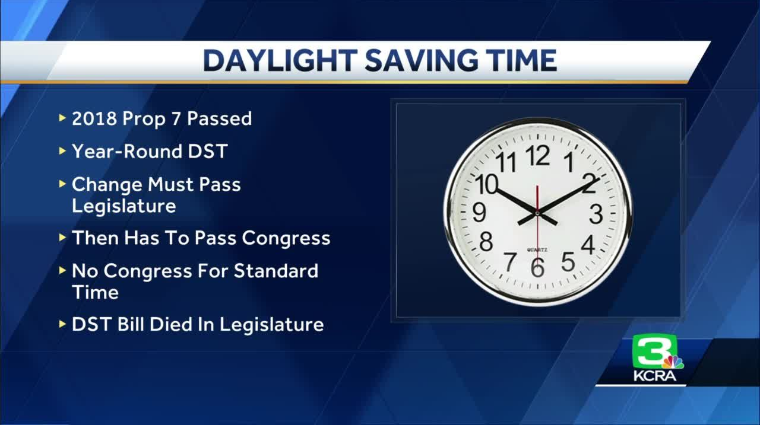Daylight Savings 2023 California: Maximize Your Sunlit Hours!

Daylight Saving Time in California for 2023 begins on March 12. Clocks will spring forward by one hour.
As we approach the onset of spring each year, California participates in the annual practice of adjusting the clocks to extend the evening daylight. This shift promises longer days and reduces energy usage, a practice observed across most of the United States.
The change occurs at 2:00 AM local time, instantly skipping to 3:00 AM. Anticipation grows for longer, sunlit afternoons conducive to outdoor and recreational activities. Remember that the end of Daylight Saving Time will bring standard time back on November 5, 2023, when clocks retreat by an hour, marking the cycle’s completion.
Contents
- 1 Daylight Savings Time In California: A Brief History
- 2 Understanding The 2023 Daylight Savings Period
- 3 Maximizing Sunlight Hours: Tips And Strategies
- 4 The Great Debate: Benefits Of Daylight Savings Time
- 5 Challenges And Controversies Regarding DST
- 6 How Businesses Adapt To The Time Change
- 7 Preparation Tips For The Time Shift
- 8 The Future Of Daylight Savings In California
- 9 Conclusion
Daylight Savings Time In California: A Brief History
Each year, Daylight Savings Time (DST) in California stirs a mix of anticipation and confusion. As clocks jump forward or fall back, the state aligns with an age-old practice aimed at saving energy and making better use of daylight. Let’s dive into the history, starting with its origins and California’s unique journey with DST.
Origins Of Daylight Savings Time
The story of Daylight Savings Time began over a century ago. It was introduced to conserve energy during World War I: shift an hour of daylight from morning to evening. People use less artificial light and save fuel for the war effort. Though it started in Europe, the United States quickly adopted the practice.
California’s Adoption And Legislation
California embraced Daylight Savings Time in 1949. Voters passed Proposition 12, officially setting a period for DST. The state has since followed the National Energy Policy Act, which establishes DST start and end dates. Californians also voted on measures like Proposition 7 in 2018. This suggested a year-round DST, pending federal approval. Yet, as of today, the spring-forward and fall-back routine continues.
Understanding The 2023 Daylight Savings Period
Daylight Saving Time (DST) adjusts our clocks to use daylight better. In California, embracing longer evenings means adjusting our daily routines. Understanding when changes occur helps us prepare. Let’s explore the 2023 Daylight Savings specifics for California residents.
Start And End Dates
In 2023, clocks will spring forward on March 12, marking the start of DST. We gain an hour of evening light. Remember, the change happens at 2 AM when clocks jump to 3 AM. DST ends on November 5. Here, clocks fall back at 2 AM, returning to standard time. Mark these dates on your calendar to stay ahead.
Impact On Local Timekeeping
Adjusting to DST impacts how we manage activities. Schools, workplaces, and public services amend their schedules. Consider these effects:
- Better Evening Light: Evening activities extend in daylight.
- Morning Adjustments: Mornings may start in the dark initially.
- Synchronization with technology is critical. Smart devices update automatically.
- Manual Adjustments Needed: Analog clocks require manual setting.
Stay informed about these shifts to maintain punctuality and enjoy the benefits of extended evening daylight. DST influences our daily lives, whether for work, school, or leisure.
Maximizing Sunlight Hours: Tips And Strategies
In 2023, California’s Daylight Savings Time will give residents even more hours of sunshine to enjoy. With proper planning and intelligent strategies, everyone can make the most of the longer days.
Outdoor Activities And Planning
Extended daylight means more time for outdoor fun. Below are ways to maximize sunlight hours:
- Organize your activities around peak sunlight hours.
- Make a weekly adventure plan to explore parks, trails, or beaches.
- Keep active with evening walks or bike rides, taking advantage of the extra daylight.
Weekends offer a prime opportunity to venture out. Consider these ideas:
| Saturday | Sunday |
| Beach volleyball | Hiking |
| Garden BBQ | Cycling |
Adjusting Indoor Lighting And Energy Use
Make your indoor space energy-efficient to match the sun’s schedule:
- Switch to LED lights; they save energy and last longer.
- Use light-coloured curtains to optimize natural light.
- Set timers for lights to ensure they only turn on when needed.
Remember, using natural light can reduce energy bills and boost your mood.
The Great Debate: Benefits Of Daylight Savings Time
The Great Debate: Benefits of Daylight Savings Time continues as Californians adjust their clocks for Daylight Savings 2023. While some question its relevance in modern society, proponents highlight significant benefits. These benefits span from economic gains to health and lifestyle improvements. Let’s delve into these advantages and understand why many still advocate for springing forward and falling back each year.
Economic Advantages
Bold sunlight extends into the evening during Daylight Savings Time, sparking economic activity. People tend to shop more, dine out, and engage in leisure after work, boosting local businesses. This economic stimulus is no small affair.
| Activity | Benefit |
| Extended Shopping Hours | Retail sales surge as daylight encourages evening shopping. |
| Tourism Boost | Longer days attract tourists, filling hotels and attractions. |
| Energy Savings | Natural light reduces the need for artificial lighting, cutting costs. |
Health And Lifestyle Improvements
- More extended daylight boosts vitamin D production, vital for bone health.
- Brighter evenings encourage physical activity, combatting sedentary lifestyles.
- Studies suggest daylight savings can improve mood and alleviate seasonal depression.
Plus, it’s time to enjoy our favourite outdoor activities for longer. Gardeners rejoice joggers hit the pavement, and families gather at parks well into the evening. This shift impacts our well-being in subtle yet profound ways.
Challenges And Controversies Regarding DST
Each year, Daylight Saving Time (DST) brings a host of challenges and controversies, and California is no stranger to the debates. As clocks spring forward, the statewide conversation ticks louder over the impacts and necessity of this time shift.
Disruption Of Biological Clocks
The most prominent challenge faced during DST is the disruption of our biological clocks. This sudden change can lead to:
- Sleep deprivation
- Decreased productivity
- Negative health impacts
This annual shift not only adjusts the time on our devices but effectively rewires our circadian rhythms, which can take days or weeks to regulate.
Opposition And Movements In California
Many Californians have voiced their opposition to DST. Efforts to end the time change have emerged, including:
| Movement | Action |
| Proposition 7 (2018) | Granted the legislature the ability to change DST |
| AB 7 | Proposed to keep California on DST year-round |
Active movements continue challenging the current DST protocol, urging state officials to reconsider its utility and impact on people’s lives.
How Businesses Adapt To The Time Change
As daylight savings approaches in California for 2023, businesses gear up for a significant shift. For many companies, this is a time to adapt their operations to maintain efficiency and provide uninterrupted services. Below are some strategies businesses employ to cope with the change in time.
Shift In Operating Hours
Businesses alter their hours to sync with daylight savings. Here’s how:
- Retail stores may extend opening hours to capitalize on more daylight.
- Restaurants could shift meal times to match new customer schedules.
- Service industries might adjust their appointment slots for better convenience.
These changes help businesses optimize daylight hours and serve their customers better.
Economic Impact On Different Sectors
The economic effects of the time change vary across sectors. Let’s look at a few:
| Sector | Impact |
| Energy | Reduced lighting needs may lower electricity costs. |
| Entertainment | Increased patronage during longer evenings. |
| Agriculture | Adjustment of work schedules to daylight hours. |
Each sector strategically adapts to either save on costs or boost revenue.
Preparation Tips For The Time Shift
Welcome to your essential guide on preparing for daylight savings 2023 in California. As we gear up for the time shift, some preparation can help ease the transition. With these useful tips, you can spring forward with minimal disruption to your routine.
Altering Sleep Schedules
Adjust your sleep pattern gradually. Start by going to bed 15 minutes earlier each night before the change. This gradual shift can help your body’s internal clock adapt seamlessly to the new schedule. Consistency is critical for a smooth transition.
Technology And Timekeeping Adjustments
Most devices update automatically, ensuring you stay on track effortlessly. Check your devices well before the time shift. Ensure all clocks, from the microwave to your car, reflect the correct time to keep you punctual for your obligations.
Prepare devices that don’t update automatically. Manual adjustments might be necessary. Set reminders to change these clocks when daylight savings begins.
- Wall clocks
- Wristwatches
- Cooking timers
- Other non-digital clocks
The Future Of Daylight Savings In California
Shifting clocks and changing policies. As days stretch and contract, Californians continue their tango with time. Daylight Savings Time (DST) sparks debates statewide. Will the long-standing tradition continue, or are we on the verge of a permanent change?
Potential Policy Changes
A bill that can transform time is on the table. This change could end the biannual clock adjustments. If passed, Californians would enjoy longer evenings year-round. Let’s explore the policy’s potential:
- Permanent Standard Time: This means the clock never changes.
- Permanent Daylight Savings: We enjoy more sunlight after work.
- Legislature’s Power: Lawmakers decide without a statewide vote.
The ultimate decision could hinge on federal law. Congress holds the key to state decisions on time changes.
Public Opinion And Referendums
Californians voiced their choice in 2018. Proposition 7 showed a clear lean towards permanent DST. But what’s the mood now?
A statewide survey revealed current public opinion:
| Preference | Percentage |
| Permanent DST | 40% |
| Keep Switching | 35% |
| Permanent Standard Time | 25% |
The practical move is to wait for a new referendum. A concrete step toward the impending policy shift keeps Californians eager. Education and awareness are essential to drive future voter decisions.
Conclusion
As Daylight Savings ticks on in California for 2023, we’ve armed you with crucial facts. Remember to adjust your clocks and embrace the longer days. Staying informed helps us navigate the time shift smoothly. So, as we spring forward or fall back, let’s make each hour count!




